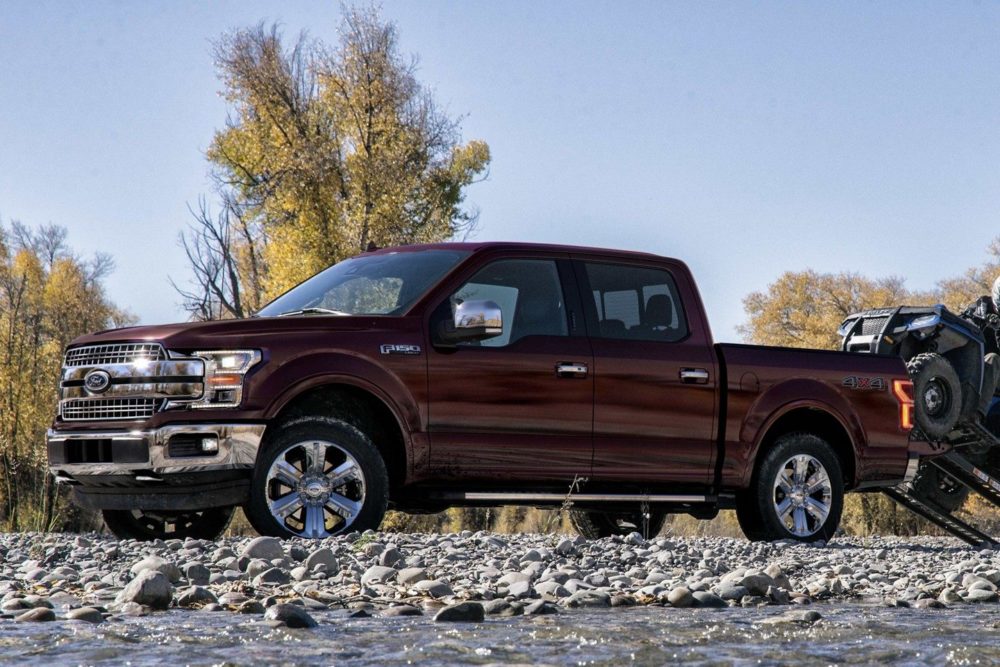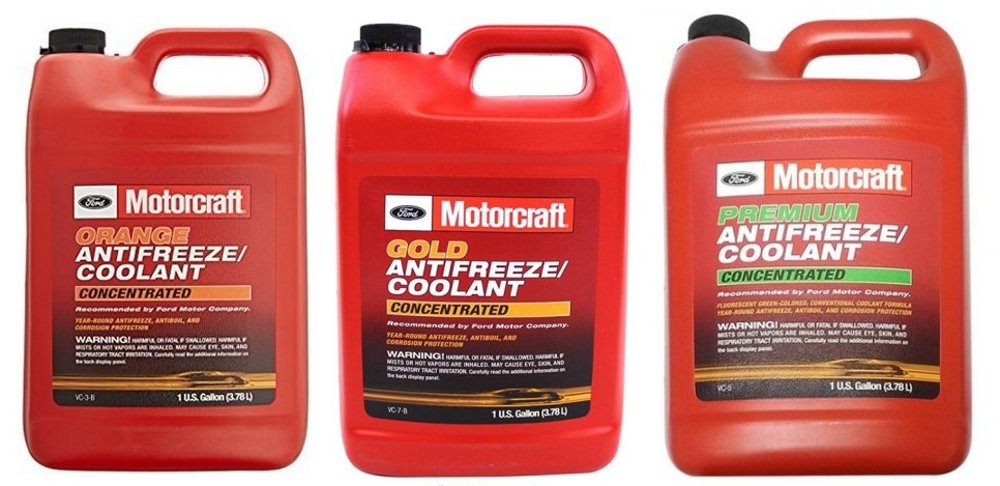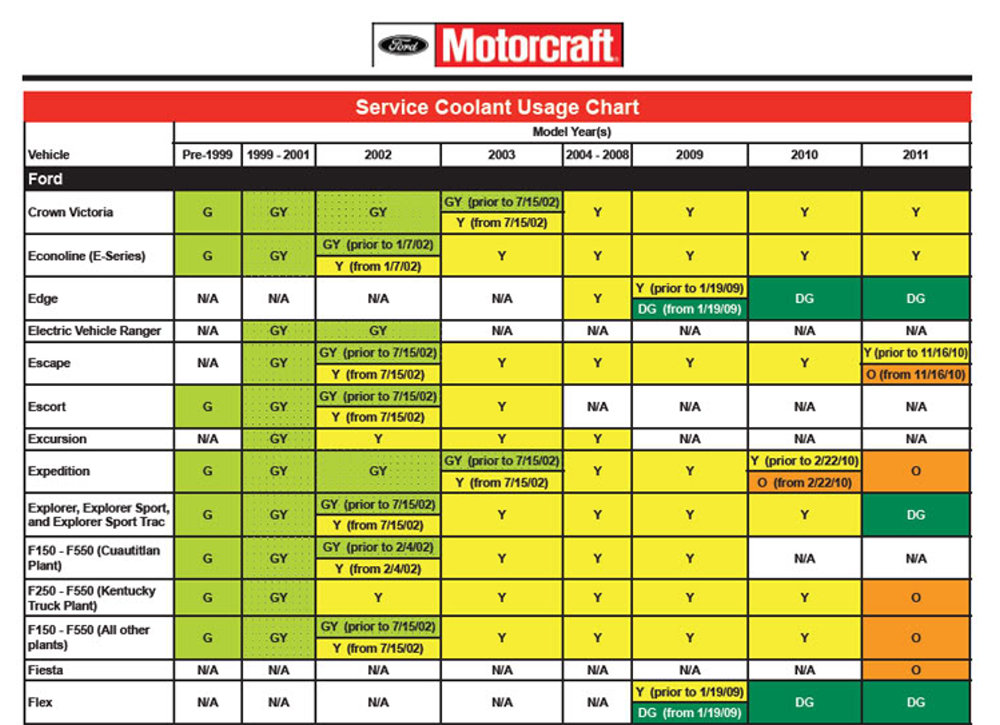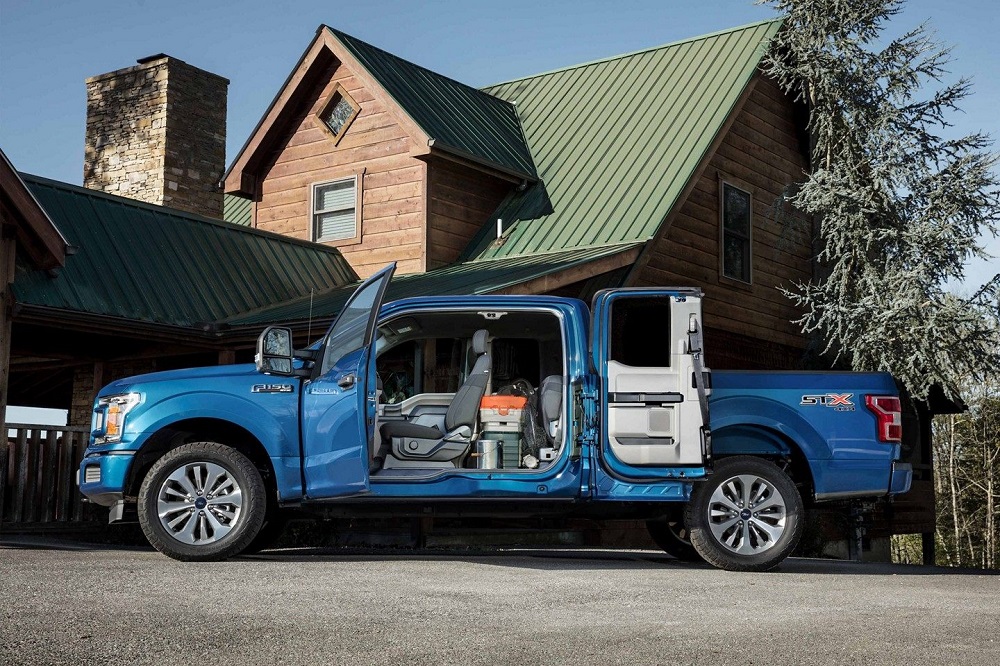Examining the Coolant Options for Your Ford F-150

Manual instructions don’t always provide the best input, especially with older F-150 pickups.
Ford trucks over the past 20 years have been offered with engine coolant that has varied from year-to-year. The Motor Company has used green, gold and orange coolant in the majority of trucks on the road today, but those folks buying used F-150 pickups may not know which type of coolant is best.
Some people would recommend to continue using whatever is in the engine of your F-150 when you buy it, but in the case of used trucks, that is assuming that the previous owner bought the best coolant, not the cheapest coolant. Other folks might suggest that you look in the owner’s manual and follow the instructions, but in the case of aging trucks, Ford may have updated what type of coolant they believe to be the best for your engine.
Fortunately, there is a thread in the V8 Engines section of the F-150 Online forums discussing which coolant is best for your half-ton truck.
The Introduction

This thread was started by “IBrakeForNobody”, who inherited an 11-year-old Ford F-150 from his father and with nearly 100,000 miles, he had to change the original engine coolant. The manual recommended orange coolant, but he found discussions insisting that General Motor’s Dex-Cool coolant causes issues, so he posted his question to the community.
So I need to change the coolant in my F150, which is still on the factory fill, 11 years and 98,000 miles later (Dad wasn’t much of a car guy…just turn the key and go).
That is about as far as I made it before I became extremely confused. The owner’s manual (which is the original that came with the truck, complete with yellowing pages) states that if the truck came with orange coolant, I should use Ford Extended Life Engine Coolant (Ford specification WSS-M97B44-D or Dex-Cool equivalent).
However, while surfing the boards (seeing what others used/recommend), it seems like orange coolant/Dex-Cool is berated for causing water pump failures, clogging heater cores, being more expensive, and so on and so fourth. Suffice to say, my F150 has had zero cooling-related issues in the 11 years and 98,000 miles we’ve had it.
What I also found interesting is that the supposed orange coolant was only used in the ’99-02 Cougar, but my ’99 F150 has the orange stuff as a factory fill. Truck has nothing special on it, except for a 6300# GVWR package (according to the window sticker) which includes a 9.75″ axle. No towing package, no HD anything, nothing.
That said, is it suggested that I use Extended Life/Dex-Cool coolant (like Prestone Extended Life), or should I change over to the green stuff (Ford Premium Engine Coolant, spec ESE-M97B44-A)?
I mean, if the owner’s manual suggests that I use the orange stuff and my truck came with it, then why is it berated for being sub-par and furthermore, why did Ford supposedly change coolants? I’m just trying to figure out why some of the info I’m reading is contradicting.
Personal Input

Many members were quick to share input from their own experiences while other shared links to articles discussing the variations in engine coolant.
“Jbrew“:
I’ve always used the Preston in the 98, – never had orange in it, – green when new. I’ve NEVER had a coolant issue as well. 272,000 same everything. The only PITA is getting the air totally purged.
“Phil6608“:
hahaha I just run the Green Preston coolant or whatever cheapest.
You can run what you want.
all I’ve heard is if you switch from the orange to the green. Be sure to flush out the old stuff good.
“EsJayEs”:
Ford uses a gold coolant form 2002+ trucks and 2003+ cars. It is their long life fluid and is shared with Chrysler. You can get it from the dealer or NAPA. If you go to NAPA and they don’t have it, they can order it. Zerex is the brand (made by Valvoline) and the part number is zxg051. You’ll want to completely flush the cooling system first to get rid of all of the green coolant.
The gold is good for 150,000 miles according to Zerex.
While some other members stressed to the OP to not use General Motors’ Dex-Cool coolant, mistaking it with Ford’s orange or gold coolant.

“Glc“:
Note that Dexcool is also gold/orange, and you should NEVER use it in a Ford. It’s nasty stuff.
“Gotts2BMe“:
dexacool is gasket eating garbage. do not use it.
Detailed Explanation

From there, the OP and some other members had some back-and-forth about which coolant is best, until phil6608 came in with all of the information needed to basically end the conversation.
This should be all the info you need on the subject!
- Other than collision, the most common cause for coolant leaks & blockages is corrosion. Corrosion is a natural effect of pure metals & alloys being exposed to water, which naturally absorbs oxygen. It is also caused by dissimilar metals (iron, steel, aluminum, etc.) being in contact with an electrolyte (water with ions), called “Galvanic action”. Both of these act continually in varying degrees to eat away at most metal components exposed to the coolant. Pump impeller blades, radiator cores, heater cores, steel pipe nipples, & thermostat housings are susceptible. The results of unchecked corrosion are leaks in the affected parts (usually the thin steel & soft aluminum ones go first) & sedimentation in the radiator, blocking the lower tubes. To combat their effects, various compounds are blended with the coolant. But they don’t last forever, especially when the vehicle is NOT operated (stored/abandoned). So regardless of mileage, COOLANT MUST BE CHANGED REGULARLY. And despite its intentionally-misleading name, long-life coolant must be changed on the SAME schedule, if not sooner. The “long-life” terminology only applies to its antifreeze/antiboil characteristics; its corrosion-inhibitors are consumed even faster than standard coolant, making it “short-life” coolant. Another marketing ploy is “ready-mix” coolant, which has gained much popularity over the typical concentrated (half-&-half) coolant previously available. A quick comparison of price (often higher for a gallon of ready-mix than for concentrate) shows that a vehicle requiring 2 gallons of coolant will cost more than twice as much to fill using ready-mix as with concentrate + distilled water.
There’s a sucker born every minute – don’t be one. Buy only normal-life concentrated coolant, and mix it yourself with distilled water.
- If you have a leak, don’t waste time or contaminate your cooling system with any “trick fixes” like cracking a raw egg or dumping pepper into the radiator. They don’t usually work for long (if at all), and they cause problems later after the leaking part is replaced. Just START by replacing the leaky part, and you’ll save money, time, & sweat. If you absolutely have to use a temporary fix, use Bar’s Stop-Leak, which is a neutralized sawdust tablet.
- COLOR When GM introduced its ill-fated (like so many other GM innovations) Dex-Cool coolant, it chose to distinguish its product (thankfully) by using an orange dye, instead of the common green. Both colors are intended to be detectable by UV light for tracing leaks, but Dex-Cool’s formula failed for 2 reasons: 1) it contains a compound that is apparently very nutritious for certain bacteria, & 2) the tap water used at many GM factories for coolant mixing contained those bacteria. The resulting slime from the flourishing bacteria created an effective glue, which blocked up the coolant passages in the radiators & heater cores, causing mass overheating for several years. The problem has since been eliminated, but the color remained, causing more confusion. Ford went to a yellow dye (also UV-detectable) to distinguish its bittering agent (& a few other chemical changes), and now some aftermarket coolants contain other colors in an attempt to indicate compatibility with certain OE coolants. The typical result is simply MORE confusion, and the only remedy is to carefully read the labelling, since no standard has yet emerged. Ford offers a quick-reference chart for Service Coolant Usage on this page, along with several other useful PDFs. Many European brands require O.A.T. (organic acid technology) which is a red coolant. Some BMWs (including some Land Rovers) use a blue type. In most cases, common green coolant is the best, and will do everything that needs to be done in any engine, with no side-effects.
That ended the dispute as to what is best, but in the long run, the proper answer is to use whatever Ford states is the best coolant today for your F-150, regardless of what the company said when the truck was new.
